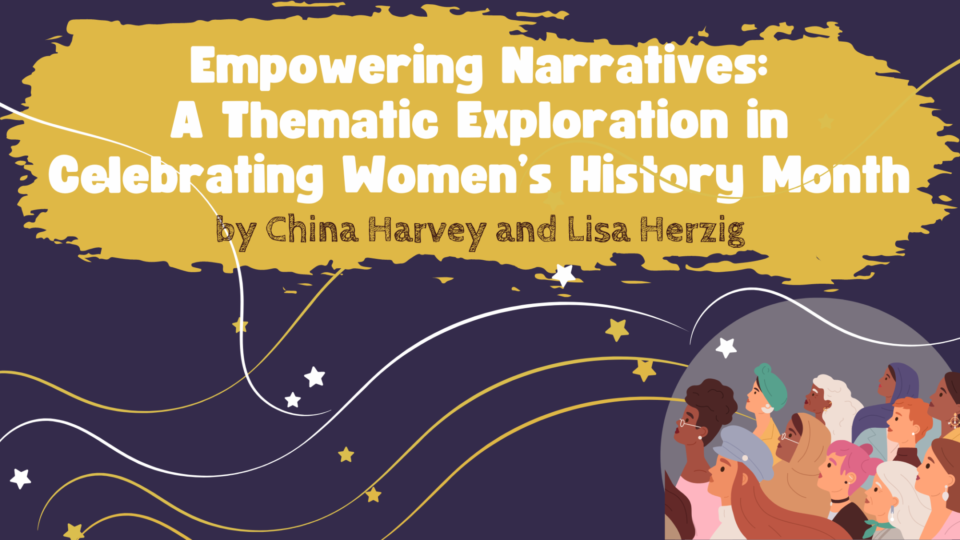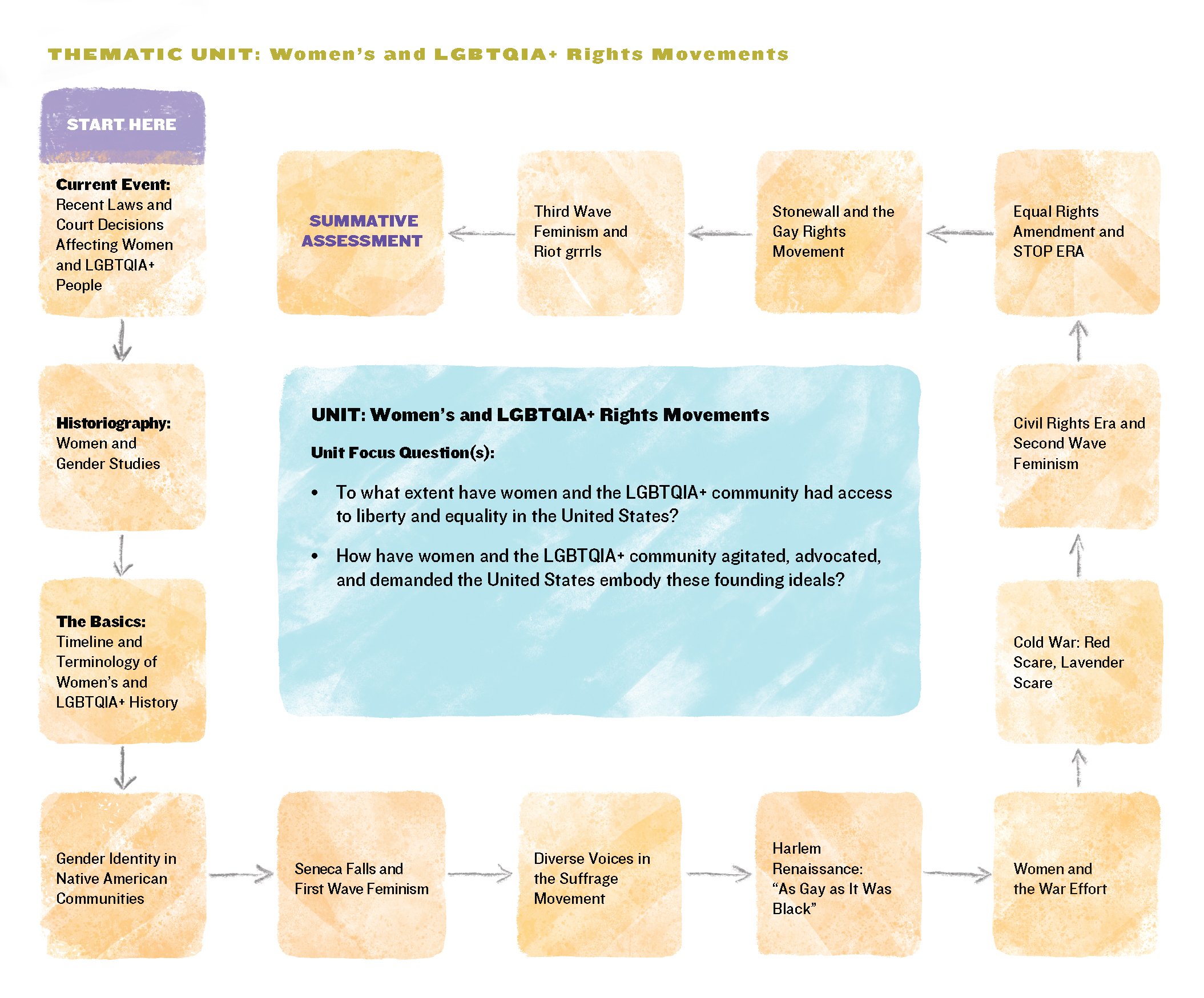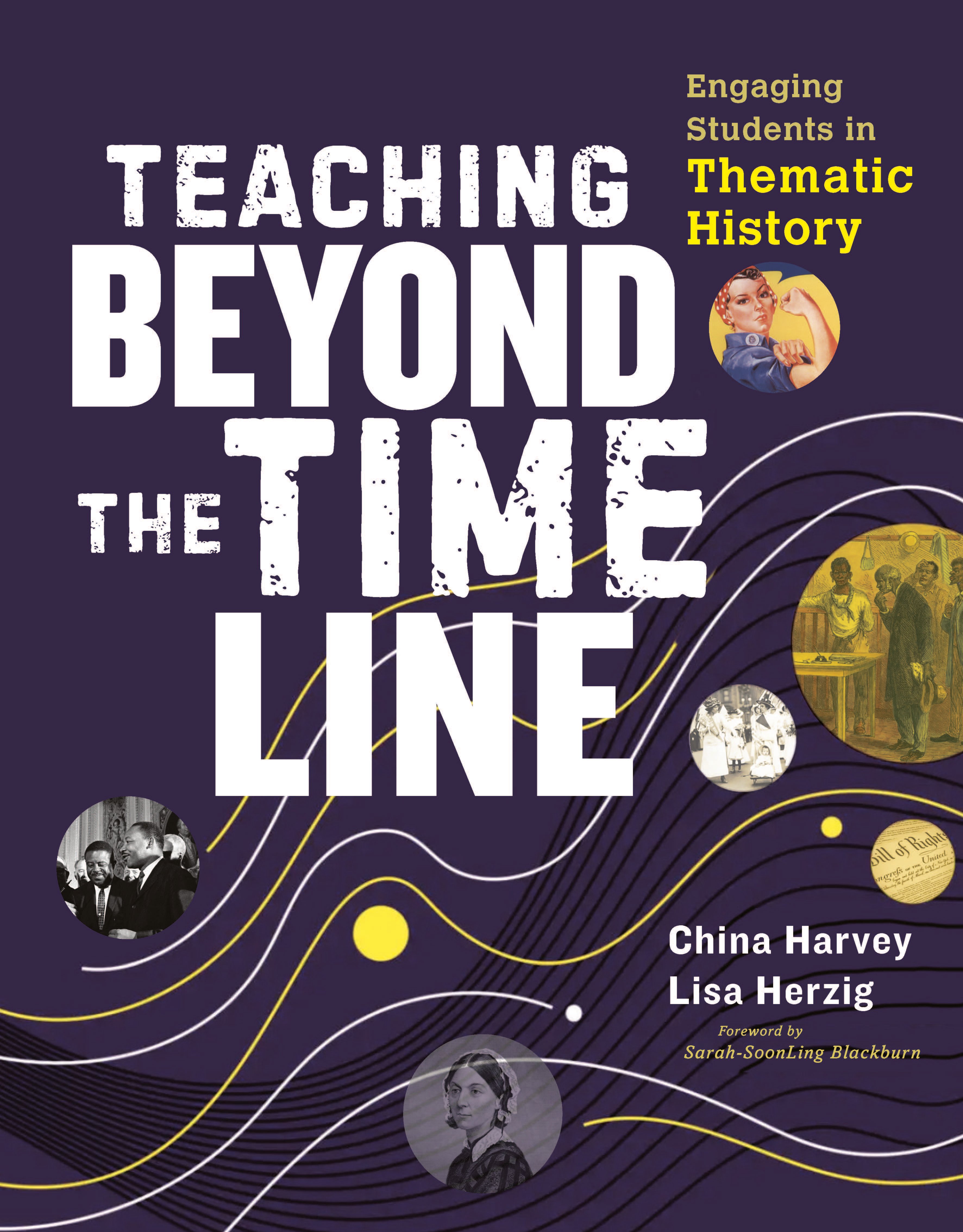
China Harvey and Lisa Herzig are the authors of Teaching Beyond the Timeline: Engaging Students in Thematic History.
***
Spring has sprung, flowers are in bloom, and Women’s History Month has arrived!
In 1980, President Jimmy Carter designated the first week of March as National Women’s History Week, remarking “Too often the women were unsung and sometimes their contributions went unnoticed. But the achievements, leadership, courage, strength, and love of the women who built America was as vital as that of the men whose names we know so well.” By the end of the decade, Women’s History Week expanded to a National Women’s History Month, reflecting the multitude of contributions women have made to the country.
Identity Months as an Opportunity to Reflect on Teaching Practice
The observance of identity months like Women’s History Month gives social studies teachers a perfect opportunity to reflect on our practice and ask ourselves: Are we being inclusive of our students’ racial, ethnic, and gender identities? How can we make our classroom more engaging and reflective of our students? Is there room to do more by having our students examine the roles diverse groups played in the shaping of this nation? Can we provide opportunities for students to understand how the issues of today have their roots deep into these histories?
Like many teachers, we strived to substantively highlight a more inclusive narrative for our students. Having taught history for 30+ years collectively, we both felt tied to a traditional, chronological timeline. Yet we continually found that approach focused on those bestowed with official political power, leaving out the stories of those who had to fight to have their voices heard and be included in the political process. We did our best to sprinkle in lessons on the achievements of women, highlighting their fight for suffrage, their role in defense industries in World War II, and their struggle for full legal equality in the 1960s and 1970s. Yet these lessons often were overshadowed as the focus of those chronological units centered on the United States’ role in World War I, the fight between the Allied and Axis Powers in the Second World War, and the geopolitical conflicts inherent in the Cold War era. Women seemed, once again, to be taking second stage. In honor of Women’s History Month, we wanted to share a bit of our thematic practice in the hopes that it might inspire other social studies teachers to consider the benefits of teaching beyond the timeline.
Teaching Women’s History Thematically
After years of wrestling with how to bring women and other historically marginalized groups out of the shadows, we transitioned to a thematic approach to teaching history. We created units that focused on a particular theme: Women’s and LGBTQIA+ Rights, African American Freedom Movement, Immigration, Economic Justice, to name a few. This reframed the focus of our course, allowing us to expand upon the traditional narrative that often leaves these stories out. Students could explore inquiry-based questions and trace movements and ideas across time, examining progress and setbacks for various groups of Americans over decades or even centuries.
Let’s take a look at the thematic map for our Women’s and LGBTQIA+ Rights unit to see how you could center the history of these two often overlooked groups.
 The center of the unit map features the two overarching unit focus questions that anchor the unit. Each smaller box represents a daily or multi-day lesson topic. With each lesson, we trace the movement for women’s and LGBTQIA+ rights over time, from the pre-colonial era to the present day, embedding chronology within our thematic approach. This unit brings to the forefront the efforts of people like Elizabeth Cady Stanton, Alice Paul, Gladys Bentley, Rosie the Riveter, Betty Friedan, and Marsha P. Johnson. Because the focus of the unit is on women and the LGBTQIA+ community, their work does not get relegated to the backburner of history. Students are able to see, for example, that women’s suffrage was not simply granted in 1920 and that the fight for true equality continues to this day. They can trace the centuries-long struggles women went through, including women of color and women in the LGBTQIA+ community, to ensure access to liberty and equality. Any of this content can be taught in a traditional, chronological course, but the placement of these lessons side by side enables students to build a deeper understanding of the setbacks and accomplishments of these groups. History becomes more relevant for our students when we have thematic units that connect with current events, center identity and inclusion, and use an inquiry-based approach.
The center of the unit map features the two overarching unit focus questions that anchor the unit. Each smaller box represents a daily or multi-day lesson topic. With each lesson, we trace the movement for women’s and LGBTQIA+ rights over time, from the pre-colonial era to the present day, embedding chronology within our thematic approach. This unit brings to the forefront the efforts of people like Elizabeth Cady Stanton, Alice Paul, Gladys Bentley, Rosie the Riveter, Betty Friedan, and Marsha P. Johnson. Because the focus of the unit is on women and the LGBTQIA+ community, their work does not get relegated to the backburner of history. Students are able to see, for example, that women’s suffrage was not simply granted in 1920 and that the fight for true equality continues to this day. They can trace the centuries-long struggles women went through, including women of color and women in the LGBTQIA+ community, to ensure access to liberty and equality. Any of this content can be taught in a traditional, chronological course, but the placement of these lessons side by side enables students to build a deeper understanding of the setbacks and accomplishments of these groups. History becomes more relevant for our students when we have thematic units that connect with current events, center identity and inclusion, and use an inquiry-based approach.
This March, as you celebrate the accomplishments of women, consider framing an entire thematic unit around this history. For more ideas on how to build a thematic course and units like Women’s and LGBTQIA+ Rights, check out our book, Teaching Beyond the Timeline: Engaging Students in Thematic History.
China Harvey is currently a high school social studies teacher and has served as instructional coach and teacher on special assignment, developing curriculum, leading professional development trainings, and helping to write the course of study for her district’s U.S. History course. She has led professional development workshops for teachers across the country, serving as a Teaching Fellow for Brown University’s The Choices Program, facilitating teacher cohorts for Learning for Justice, and working with elementary teachers and the community on moving beyond the myths surrounding Native American history.
Lisa Herzig teaches high school students in World History, U.S. History, and AP U.S. History. Selected as a teacher on special assignment for her department, she was also a district finalist for “Teacher of the Year” award. Over the span of her career, she has helped create district-wide assessments, worked on curriculum development, and has written courses of study for World and U.S. History.
Related Reading

The following is an adapted excerpt from Teaching Beyond the Timeline by China Harvey and Lisa Herzig.


